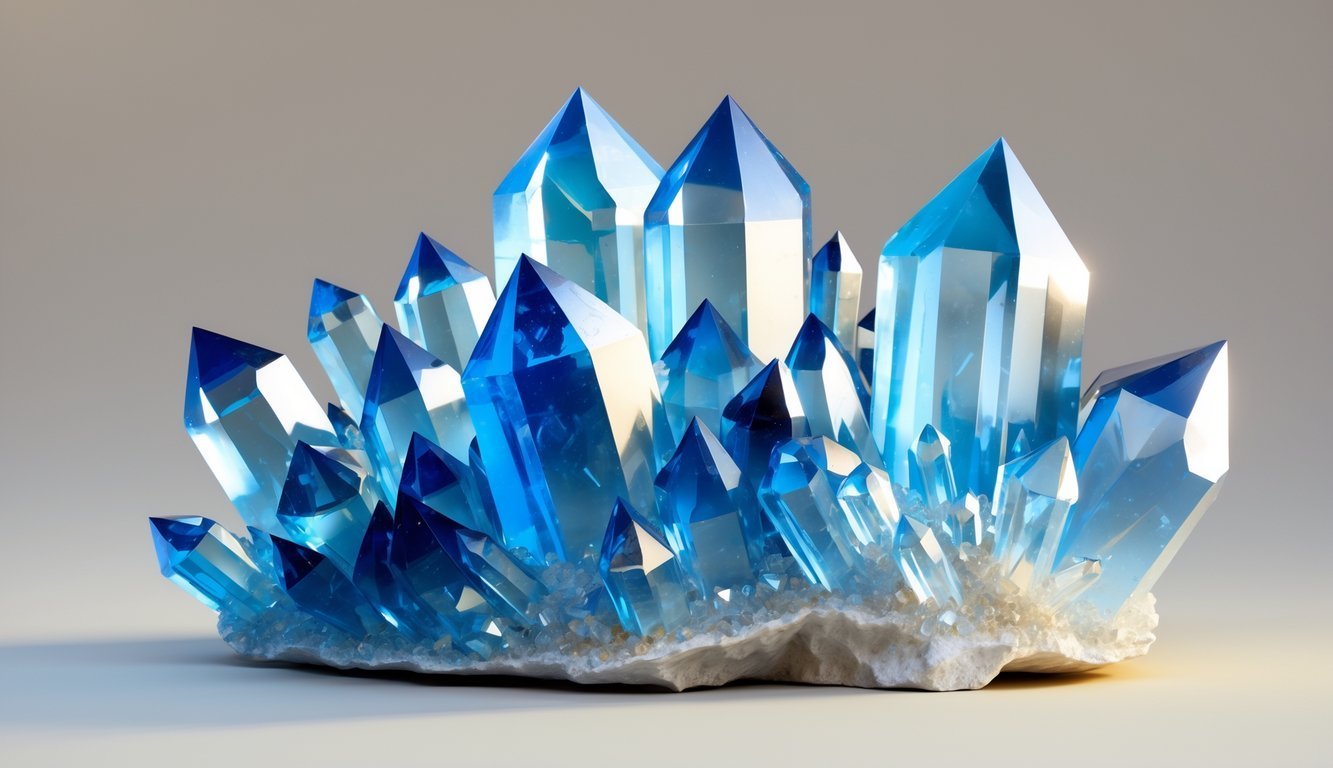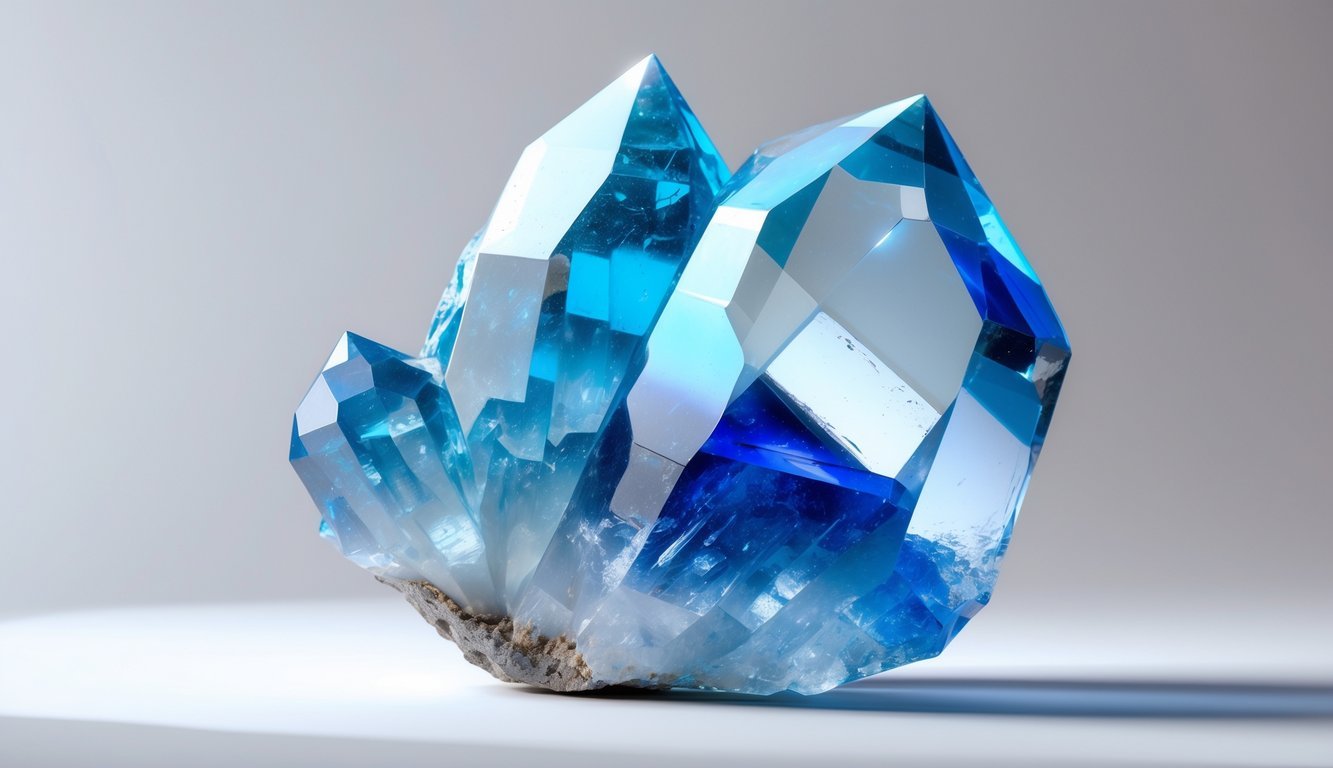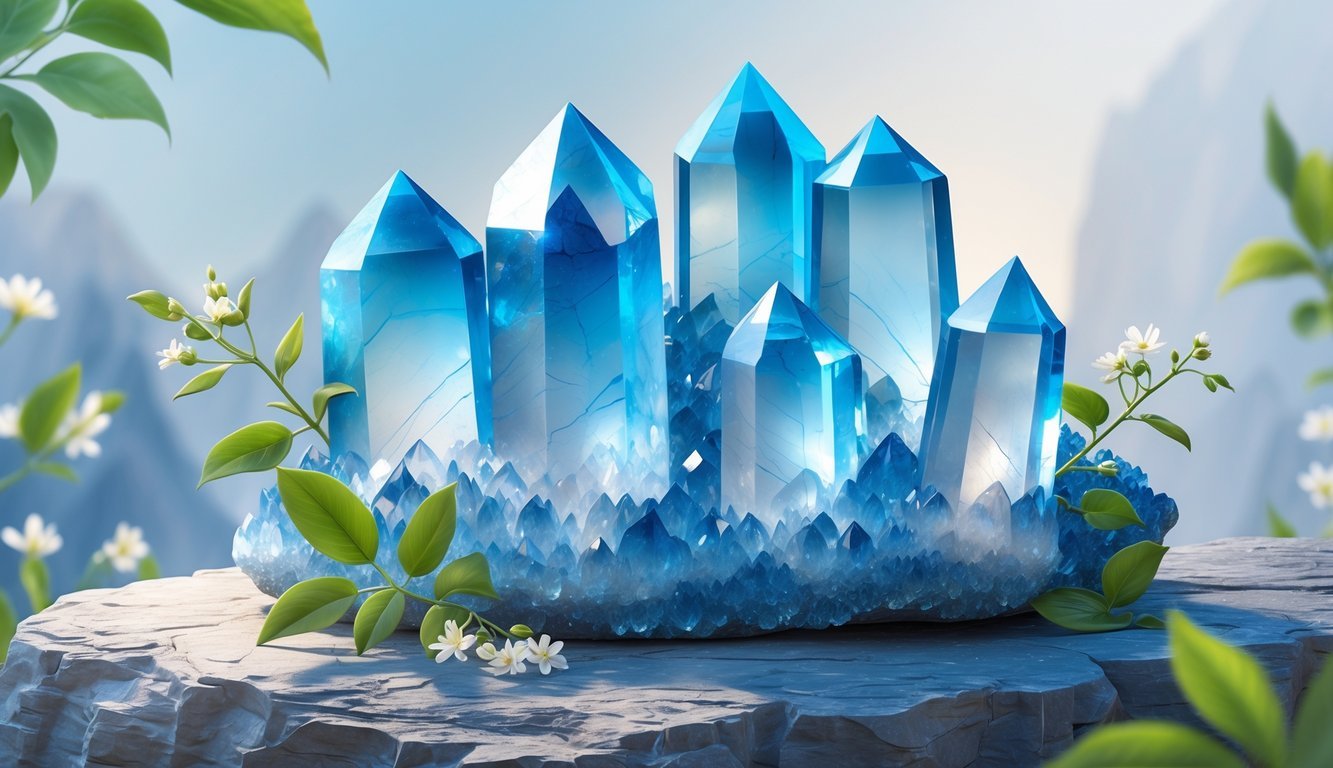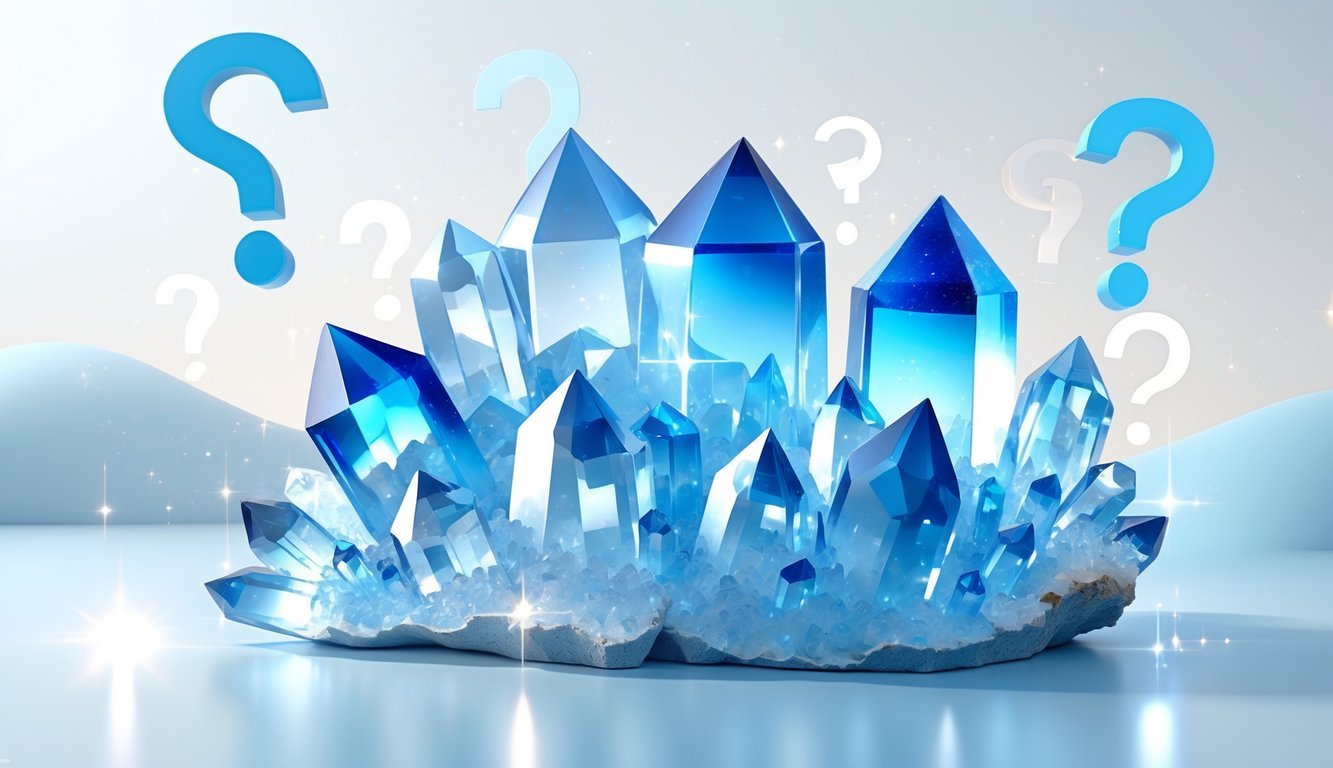PsychNewsDaily Publishers
100 Summit Drive
Burlington, MA, 01803
Telephone: (320) 349-2484
PsychNewsDaily Publishers
100 Summit Drive
Burlington, MA, 01803
Telephone: (320) 349-2484
Blue quartz is a unique quartz variety characterized by its calming blue color and mineral inclusions, valued for its beauty and metaphysical healing properties.

Blue quartz stands out as a unique type of quartz, showing off its blue color thanks to tiny mineral inclusions inside the stone.
You’ll find people value it for both its beauty and its calming energy, so it’s no wonder it’s popular in jewelry, home decor, and healing practices. Whether you’re just curious about its look or want to tap into its energy, blue quartz has something a little special to offer.
You’ll spot blue quartz as countertops or as crystals for protection and relaxation.
Its colors and properties really set it apart from other quartz types.
As you read, you’ll get a better idea of what blue quartz is, why it matters, and how people use it in all sorts of ways.

Blue quartz is a natural stone you’ll recognize by its blue color and its place in the quartz family.
Nature forms it through processes that mix minerals and crystals.
You’ll find different types of blue quartz, each with its own features shaped by origin and mineral content.
Blue quartz pops up in several parts of the world, so it’s a pretty well-known gemstone.
Blue quartz belongs to the quartz family, and it’s mostly made of silicon dioxide.
Tiny mineral inclusions like dumortierite or other fibers give it that blue shade.
These minerals create the soft blue color you notice right away.
Quartz forms when hot, mineral-rich water cools deep underground.
The mix of minerals with quartz brings out those blue hues.
You’ll find this happening in places like rock veins or as part of bigger mineral clusters.
Sometimes, you’ll see star blue quartz, which sparkles thanks to mineral fibers inside.
You’ll find at least three main types of blue quartz, depending on which minerals are inside.
Here are the most common:
Some stones have coatings, like angel aura quartz, which gives a shiny, rainbow look on the surface.
Each type brings something different—be it color, sparkle, or clarity.
These differences can change how you might use the stone, whether you’re into jewelry or collecting.
You can find blue quartz in quite a few places around the world.
Brazil produces a lot, with its big natural quartz deposits.
The United States also has several key sources, especially in spots with rich mineral geology.
Other places like Madagascar, Spain, and Russia are known for blue quartz too.
Each region gives the stones a slightly different color or quality because of the local minerals.
Knowing where your blue quartz comes from helps you understand more about its minerals and quality.
That’s especially useful if you want to add it to your gemstone collection or use it in crafts.

People know blue quartz for its calming energy and its link to clear communication and emotional healing.
Its properties support physical health and help you bring peace and protection into your daily life.
Blue quartz gives off a soothing vibe that helps with spiritual growth and emotional balance.
It helps you find inner peace and encourages emotional healing, especially when stress or anxiety creeps in.
Folks often use this crystal for metaphysical healing to restore calm and protect their energy.
It also brings healing energy that supports your physical health.
Many believe blue quartz helps keep the respiratory, immune, and endocrine systems balanced.
Its metaphysical properties make it a great stone when you want harmony in your body and mind.
Blue quartz connects with the throat chakra, or Vishuddha.
This chakra is all about communication and self-expression.
When you work with this crystal, it can help you speak your truth more clearly and boost your confidence.
Using blue quartz supports your communication skills, making it easier to express your thoughts and feelings.
It encourages mental clarity and honesty, which can help your relationships and help you feel understood.
This tie to the throat chakra makes it a strong tool for anyone who wants to improve personal or professional communication.
You can turn to blue quartz for emotional healing and stress relief.
Its calming energy helps reduce anxiety and fear, so you can stay focused and balanced.
The crystal’s vibe promotes peace and tranquility, which is good for your overall well-being.
On the physical side, people say blue quartz supports healing in the lungs, heart, spleen, and endocrine system.
It gently helps your body’s natural healing processes.
Keeping blue quartz close might help you feel healthier and restore your energy when you’re feeling run down.
Blue quartz is a beautiful crystal that fits easily into daily routines.
Wearing it as a necklace or ring keeps its calming energy nearby all day.
Lots of people carry small blue quartz stones in their pockets for a quick energy boost.
At home, blue quartz adds a protective, peaceful vibe to your space.
It helps reduce fear and creates a calm environment.
You can also use it in meditation or creative work to boost focus, creativity, and a sense of unity.
This crystal’s mix of beauty and healing makes it a nice addition to jewelry and home décor.

You’ll find out how to spot real blue quartz, learn about its healing benefits, and pick up tips for keeping your jewelry looking good.
You’ll also see what affects the price, discover blue quartz types, and get a few ideas for using it at home.
Look for a consistent blue tint with some natural variation.
Real blue quartz usually shows a soft, cloudy look from tiny mineral inclusions or light scattering inside.
If the color looks too bright, super even, or a bit plastic-y, it’s probably fake.
Testing hardness or asking a jeweler can help confirm if it’s real.
Blue quartz is said to promote calmness and help reduce stress.
It can improve self-awareness and encourage clear communication.
People use it for mental well-being and to bring peaceful energy into their space.
Clean your blue quartz with warm soapy water and a soft cloth.
Avoid harsh chemicals or ultrasonic cleaners, since they can damage the stone.
Store your jewelry separately so it doesn’t get scratched by harder gemstones or metals.
Color depth, size, and clarity all play a part in the price.
Stones with a rich, even blue color and few flaws are usually worth more.
Cut and overall quality matter too.
You’ll find blue quartz in darker or lighter shades, sometimes mixed with white or gray.
Some stones have a silky or cloudy look from tiny inclusions.
Each piece is unique because of differences in color and patterns.
You can use blue quartz for countertops, tiles, or as a decorative accent. Its soft blue color brings a calm, cool vibe to any room.
Try adding it to lamps, bookends, or even small sculptures. It gives your space a natural, slightly unique touch.